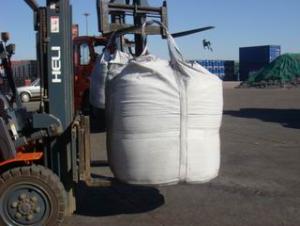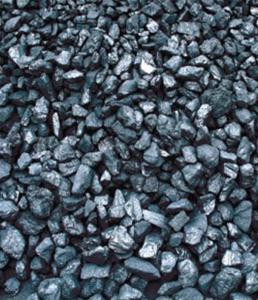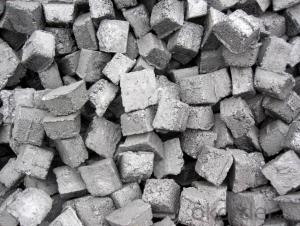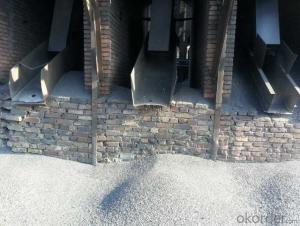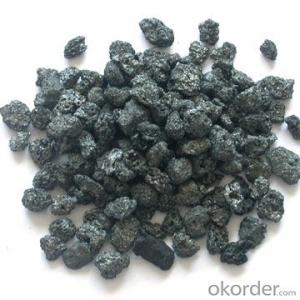Gas Calcined Anthracite made from Taixi Anthracite with low Sulfer
- Loading Port:
- China Main Port
- Payment Terms:
- TT or LC
- Min Order Qty:
- -
- Supply Capability:
- 4000mt m.t./month
OKorder Service Pledge
OKorder Financial Service
You Might Also Like
Introduction of Calcined Anhtracite :
It used the high quality anthracite as raw materials through high temperature calcined at over 2000 by the DC electric calciner with results in eliminating the moisture and volatile matter from anthracite efficiently, improving the density and the electric conductivity and strengthening the mechanical strength and anti-oxidation. It has good characteristics with low ash, low resistvity, low sulphur, high carbon and high density. It is the best material for high quality carbon products.
2: Usage:Calcined Anthracite coal is produced using the best Anthracite-Taixi Anthracite with low S and P, It is widely used in steel making and casting.
3: Package: In mt bags or to be discussed with the buyer
4:General Specification of Calcined Anthracite coal:
PARAMETER UNIT GUARANTEE VALUE | |||||
F.C.% | 95MIN | 94MIN | 93MIN | 92MIN | 90MIN |
ASH % | 4MAX | 5MAX | 6MAX | 7MAX | 8MAX |
V.M.% | 1 MAX | 1MAX | 1.5MAX | 1.5MAX | 1.5MAX |
SULFUR % | 0.5MAX | 0.5MAX | 0.5MAX | 0.5MAX | 0.5MAX |
MOISTURE % | 0.5MAX | 0.5MAX | 0.5MAX | 0.5MAX | 0.5MAX |
Size can be adjusted based on buyer's request.
5:Pictures of Calcined AnthraciteCoal:

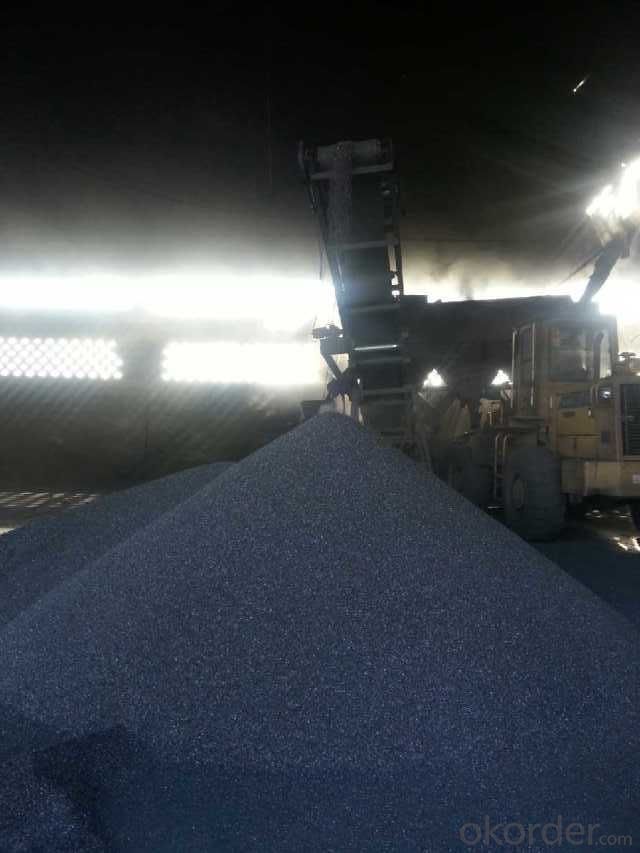
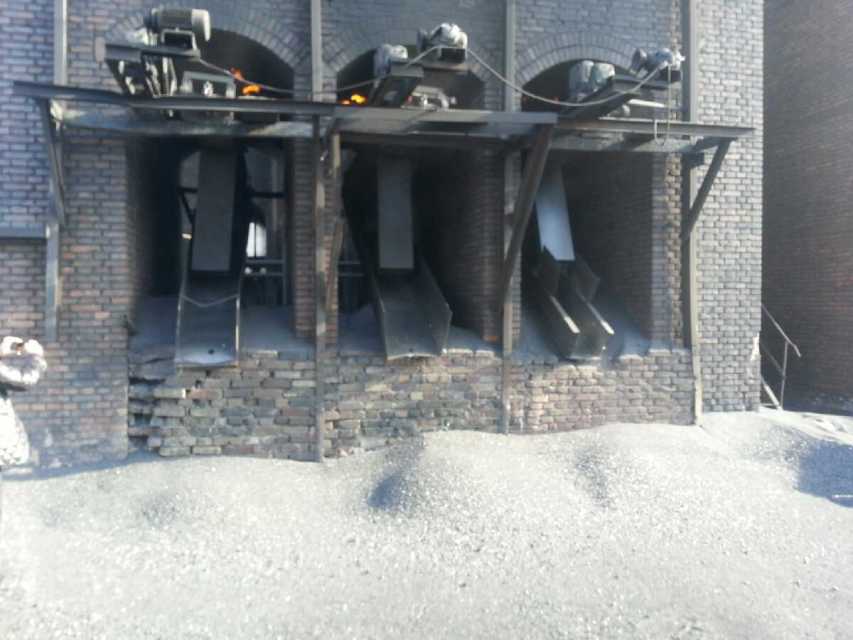
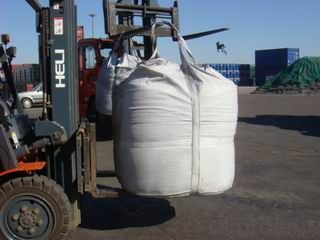
- Q:How does carbon impact the melting of polar ice caps?
- Carbon impacts the melting of polar ice caps primarily through the process of global warming. When carbon dioxide (CO2) and other greenhouse gases are released into the atmosphere, they trap heat and cause the Earth's temperature to rise. This increase in temperature leads to the melting of polar ice caps, as the excess heat causes the ice to melt at a faster rate than it can replenish. Additionally, carbon emissions contribute to the acidification of the oceans, which further accelerates the melting of ice.
- Q:How much carbon does it take for 4 people to barbecue?!
- Hello The amount of charcoal is according to the number, the number of barbecue barbecue food and other circumstances, the amount of each person is different, generally 6 pounds of charcoal enough for 3-5 to use, recommended to get for a little extra, so is not enough, the charcoal is not expired, can not run out of the next and then, put in the house you can also clean the indoor air.
- Q:How is carbon used in the production of rubber?
- Carbon is used in the production of rubber as a reinforcing agent. It is added to the rubber mixture in the form of carbon black, which strengthens the rubber and improves its durability, resilience, and resistance to wear and tear. Carbon black also enhances the rubber's ability to absorb energy and provides it with a black color.
- Q:How accurate is carbon dating?
- Carbon dating is generally considered to be a highly accurate method for determining the age of organic materials up to around 50,000 years old. However, it becomes less precise for older samples due to the decreasing amount of carbon-14 remaining. Additionally, certain factors such as contamination and environmental variations can affect the accuracy of the results.
- Q:What is the structure of graphite, another form of carbon?
- Graphite has a layered structure where carbon atoms are arranged in hexagonal rings, forming sheets of interconnected hexagons. These sheets are stacked on top of each other, with weak forces of attraction between them, resulting in a slippery and flaky structure.
- Q:How does carbon impact ocean acidity?
- Ocean acidification is caused by carbon, which impacts the acidity of the ocean. When seawater absorbs carbon dioxide (CO2) from the atmosphere, it reacts with water molecules and forms carbonic acid. This process lowers the pH levels of the ocean, making it more acidic. Human activities, including burning fossil fuels, deforestation, and industrial processes, are the primary sources of carbon dioxide in the atmosphere. As these activities increase the concentration of CO2 in the atmosphere, more of it is absorbed by the oceans. The increase in acidity has negative effects on marine life. Organisms with calcium carbonate shells, such as coral reefs, shellfish, and some plankton species, are particularly vulnerable to ocean acidification. The higher acidity makes it difficult for these organisms to build and maintain their shells, resulting in reduced growth rates and increased mortality. Ocean acidification also disrupts the entire marine food web. It upsets the balance between predators and prey, as some plankton species struggle to develop and survive in acidic conditions. This can have a ripple effect on the entire ecosystem, affecting fish populations, marine mammals, and even humans who rely on seafood for sustenance. Furthermore, ocean acidification has significant economic consequences. Industries like commercial fisheries and tourism, which depend on healthy marine ecosystems, can suffer from the decline in fish populations and the degradation of coral reefs. To mitigate the impacts of carbon on ocean acidity, it is crucial to reduce carbon dioxide emissions and shift towards cleaner and more sustainable energy sources. Measures like creating marine protected areas and implementing sustainable fishing practices can also help protect and restore marine ecosystems, thereby mitigating the effects of ocean acidification.
- Q:What are greenhouse gases?
- Greenhouse gases are gases that trap heat in the Earth's atmosphere, contributing to the greenhouse effect and causing global warming. Some examples of greenhouse gases include carbon dioxide, methane, and nitrous oxide.
- Q:What are the basic structures of iron carbon alloys?
- Ferrite: a solid solution in which carbon is dissolved in alpha -Fe, called ferrite. The symbol is Fe. Ferritic carbon content is very low, at 727 degrees of 0.0008%, and its mechanical properties similar to pure iron, strength and hardness is not high, plasticity and toughness good.Austenite: a solid solution in which carbon is dissolved in gamma -Fe, called austenite.
- Q:What is carbon offsetting in the travel industry?
- Carbon offsetting in the travel industry refers to the practice of compensating for the carbon emissions produced during travel activities by investing in projects that reduce or remove an equivalent amount of greenhouse gases from the atmosphere. As travel contributes significantly to global carbon emissions, carbon offsetting has emerged as a way for individuals and businesses to take responsibility for their environmental impact and strive towards more sustainable practices. When individuals or companies choose to offset their travel emissions, they calculate the carbon footprint of their trip based on factors like distance traveled, mode of transport, and fuel consumption. This calculation helps determine the amount of carbon dioxide equivalent emitted during the journey. To offset these emissions, they then invest in projects that reduce or remove the same amount of greenhouse gases from the atmosphere, such as renewable energy projects, reforestation efforts, or energy efficiency initiatives. The concept of carbon offsetting aims to achieve carbon neutrality, where the emissions produced are balanced by an equivalent reduction or removal of emissions elsewhere. By investing in offset projects, travelers and travel companies can effectively mitigate their environmental impact and contribute to overall efforts in combating climate change. Carbon offsetting in the travel industry not only helps reduce the carbon footprint of individual trips but also encourages the development of sustainable practices within the tourism sector. It provides travelers with the opportunity to minimize their environmental impact by supporting projects that promote renewable energy, conserve biodiversity, or improve local communities' livelihoods. However, it is essential to ensure that carbon offset projects are credible and deliver genuine emission reductions. Verified standards and certifications, such as the Gold Standard or Verified Carbon Standard, help ensure the integrity and transparency of offset projects. It is also important to prioritize efforts in reducing emissions directly, such as using more fuel-efficient transportation or opting for low-carbon alternatives, before relying solely on offsetting. In conclusion, carbon offsetting in the travel industry allows individuals and businesses to take responsibility for their carbon emissions by investing in projects that reduce or remove greenhouse gases. It is a proactive approach towards minimizing the environmental impact of travel and promoting sustainable practices within the tourism sector.
- Q:Recently bought an alarm clock, it is recommended to use carbon batteries. Nanfu battery is not good for the movement.
- Carbon batteries are not recommended, and each carbon cell can permanently destroy one cubic meter of soil or more than a dozen cubic meters of water!Today's alkaline batteries are basically mercury free environmentally friendly batteries, which can be thrown away with common waste, with very little environmental damage!What's more, the durability of alkaline batteries is several times that of carbon! Now alkaline battery quality is good, basically will not leak alkaline material!If you think the alkaline battery is not good, it is recommended to use Ni MH rechargeable batteries. The battery is also environmentally friendly and can be recycled for long periods of time,Initial input slightly larger, but if the correct use and charging, cost-effective! Especially for toys with large power consumption!The disadvantage of Ni MH batteries is memory, which needs to be used up and recharged, and is easy to discharge. It loses ten percent of the battery power every monthA few! But now there is a new type of Ni MH rechargeable battery, which is introduced by the manufacturer as if it has a semi discharge of less than fifteen percent and a low memoryOf! More suitable for clocks and watches, remote control, these electrical appliances! What's more, the voltage of Ni MH battery is usually 1.2V, which is lower than that of ordinary dry electricityPond. It is recommended to study the charging, storage and usage of NiMH rechargeable batteries. The correct method of use can save moreMoney, more environmentally friendly!The earth is my home, and it depends on everyone!!
1. Manufacturer Overview |
|
|---|---|
| Location | |
| Year Established | |
| Annual Output Value | |
| Main Markets | |
| Company Certifications | |
2. Manufacturer Certificates |
|
|---|---|
| a) Certification Name | |
| Range | |
| Reference | |
| Validity Period | |
3. Manufacturer Capability |
|
|---|---|
| a)Trade Capacity | |
| Nearest Port | |
| Export Percentage | |
| No.of Employees in Trade Department | |
| Language Spoken: | |
| b)Factory Information | |
| Factory Size: | |
| No. of Production Lines | |
| Contract Manufacturing | |
| Product Price Range | |
Send your message to us
Gas Calcined Anthracite made from Taixi Anthracite with low Sulfer
- Loading Port:
- China Main Port
- Payment Terms:
- TT or LC
- Min Order Qty:
- -
- Supply Capability:
- 4000mt m.t./month
OKorder Service Pledge
OKorder Financial Service
Similar products
New products
Hot products
Hot Searches

